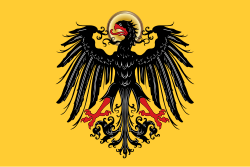Orebité
| Účast na husitských válkách a křížových výpravách proti kacířům | |
 Korouhev s pelikánem, kterou později převzali sirotci | |
| Základní info | |
|---|---|
| Aktivní | 1420–1424 |
| Transformace | |
| Operační území | |
| Ideologie | Česká reformace chiliasmus |
| Velitel | Hynek Krušina IV. z Lichtenburka Diviš Bořek z Miletínka |
| Základny | Hradec Králové |
| Spojenci | |
| Oponenti |
|
| Konflikty/boje | křížové výpravy proti husitům |
Orebité je označení pro východočeskou skupinu husitů pojmenovanou podle kopce Oreb nad městečkem Třebechovice pod Orebem, na kterém se poprvé shromáždili 20. dubna 1420.
Hlavní slovo v tomto seskupení měla zpočátku šlechta. Centrem svazu sice bylo královnino město Hradec Králové, které většinou ovládal radikální kněz Ambrož, ale ostatní velká východočeská města se k husitům nepřidala. Nejvýznamnějším představitelem orebitů byl Hynek Krušina z Lichtenburka. Z vyšší šlechty k orebitům patřili Aleš Vřešťovský z Rýzmburka, Jan Krušina z Lichtenburka, bratři Viktorín a Hynek z Kunštátu a Poděbrad a Jan Puška z Kunštátu. Nejpočetnější ale byli nižší šlechtici, například Diviš Bořek z Miletínka, Jan Hertvík z Rušinova, Beneš Mokrovouský z Hustířan, Jiří z Chvalkovic a jiní.
Orebité zřejmě netvořili pevné organizační seskupení a měli nejblíže k umírněným pražanům, i svým náboženským cítěním, postupně se však radikalizovali. Mezi orebity na rozdíl od dalších husitských skupin neměli kněží prakticky žádnou moc, stejně tak je nerozvracely žádné kacířské sekty jako adamité a další. Nevěřícího protivníka ale chtěli zlikvidovat silou zbraní podobně jako radikální táborité.
Prvním vojenským vystoupením orebitů bylo tažení na pomoc obležené Praze, kam přitáhli 2. května 1420, poté co cestou vyvrátili cisterciácký klášter Hradiště nad Jizerou. Významný byl jejich podíl zejména na vítězství v podzimní bitvě pod Vyšehradem, kde byl Hynek Krušina vrchním hejtmanem.V letech 1421-1422 působily orebitské oddíly v součinnosti s pražany, někdy i tábority, převážně ve východních Čechách. Podílely se např. na dobytí Českého Brodu.
V roce 1423 vytvořil Jan Žižka, jemuž byl blízký kněz Ambrož, ve východních Čechách z části táborských polních vojsk nové bratrstvo Menšího Tábora. Část orebitů se k němu přidala, část šlechty však zůstala spojencem pražanů. Po Žižkově smrti se příslušníci jeho svazu přejmenovali na sirotky.
Externí odkazy
 Oreb ve Vlastenském slovníku historickém ve Wikizdrojích
Oreb ve Vlastenském slovníku historickém ve Wikizdrojích
Média použitá na této stránce
Autor: Dragovit, derived from the work Sirotci 2.jpg, Licence: CC BY-SA 4.0
Rectagular version of the standard used by Bohemian Orebites, later renamed to Orphans (Czech: Sirotci), the hussite faction of the 15th century.
Autor: Germenfer, Licence: CC BY-SA 4.0
Rectangular version of the standard of the Taborites, a bohemian Hussite faction from the 15th century.
Autor: Peter Loeser and Eugene Ipavec, Licence: CC BY-SA 3.0
During the Hussite Wars when the City of Prague was attacked by "Crusader" and mercenary forces, the city militia fought bravely under this banner. It was later captured by Swedish troops on their raid in 1649 and eventually placed in the Royal Military Museum in Stockholm; today it is simply called the "Prague Banner." Although this flag still exists, it is in very poor condition. When the Banner was first made and used is open for debate, but earliest evidence indicates that a gonfalon with some municipal charge painted on it was used for Old Town as early as 1419. Eva Turek dates this flag to about 1530 based on the style of characters, painted bordure, and fleurs-de-lis stenciled on it. Since this particular municipal militia flag was used before 1477 and during the Hussite Wars, it is the oldest still preserved municipal flag in Bohemia.
Autor: Alex Tora, Licence: CC BY 3.0
Flags of Ruthenian lands in the battle of Tannenberg, 1410.
Red_St_George's_Cross
Used by Archbishopric-Electorate of Trier 898–1794 (Erzbistum Trier)
Autor: Samhanin & Havsjö (change the color of the 'Royal banner of the Kingdom of Bohemia.svg'), Licence: CC BY-SA 4.0
Royal banner of the Kingdom of Bohemia (1305)
Erb Jana Žižky z Trocnova.
Autor: ThecentreCZ, Licence: CC BY-SA 4.0
Coat of arms of Bohemian Crown in Österreich-Ungarn Monarchy.
Banner of Kingdom of Poland in the 14th century
A seal of Duke Premislaus II from 1290 shows the ruler holding a banner emblazoned with a crowned eagle. During the reign of King Ladislaus (r. 1320–1333), the red cloth with the White Eagle was established as the royal banner. The orientation of the eagle on the banner varied; its head could point either upwards or towards the hoist.
Autor: Cronholm144, Licence: CC BY-SA 4.0
Coat of arms of the Holy See with gold key in bend as described in Donald Lindsay Galbreath, A Treatise on Ecclesiastical Heraldry (W. Heffer and Sons, 1930), p. 9; Bruno Bernhard Heim, Heraldry in the Catholic Church: Its Origin, Customs and Laws (Van Duren 1978 ISBN 9780391008731), p. 54; Heraldry Society of Great Britain; Michel Pastoureau, "Keys" in Philippe Levillain, The Papacy: An Encyclopedia (Routledge 2002 ISBN 9780415922302), vol. 2, p. 891.
Autor: Alex Tora, Licence: CC BY 3.0
Flags of Ruthenian lands in the battle of Tannenberg, 1410.
Anachronistic representation of the royal banner of the 12th(?) or 13th to early 15th centuries.
The banner of this period would be square in shape, and the eagle would not have a halo.
The black eagle in a golden field was the ensign of the German kings (as opposed to the emperor) in the 12th and 13th century, but in the 14th century, it was gradually re-interpreted as representing the empire. An early reference to such a banner as "imperial" is made in an account of the burial of Charles IV (d. 1378), as der schwartz adler des richs in einem guldin veld .










